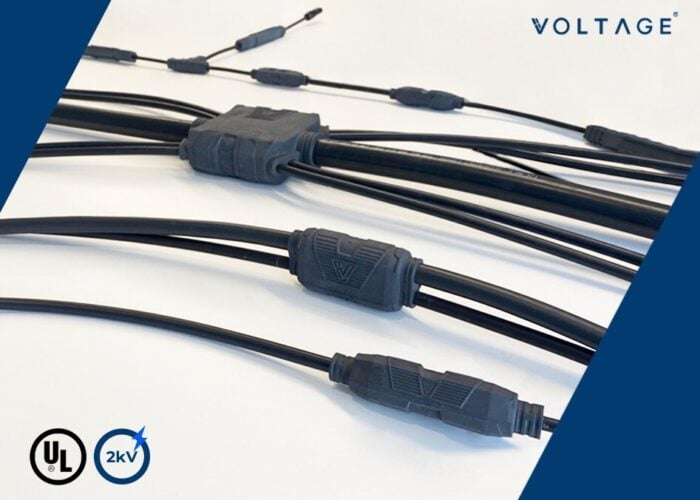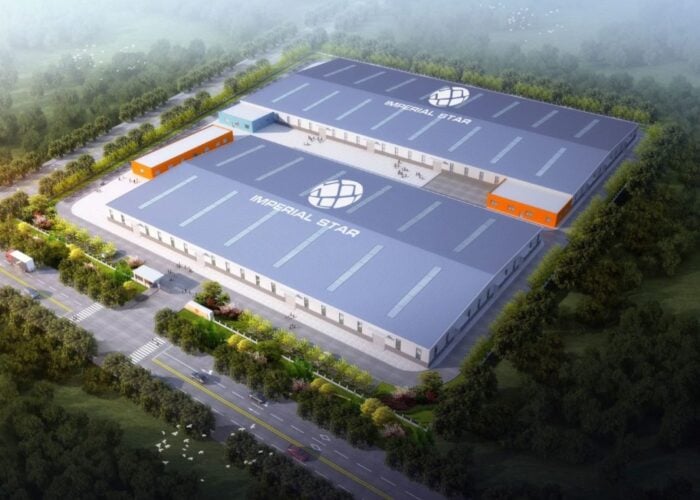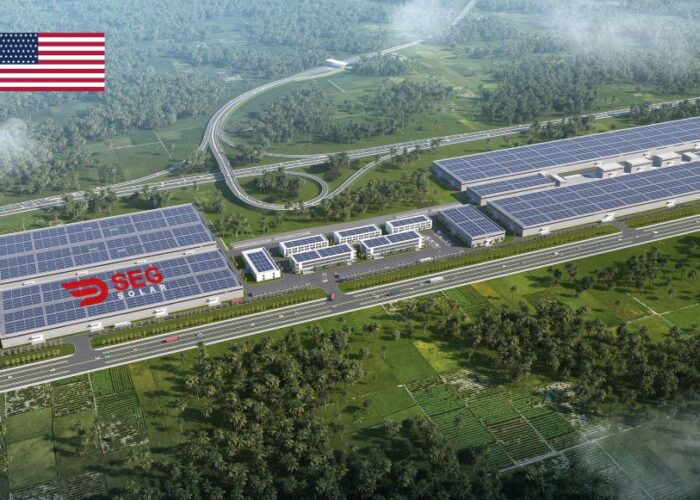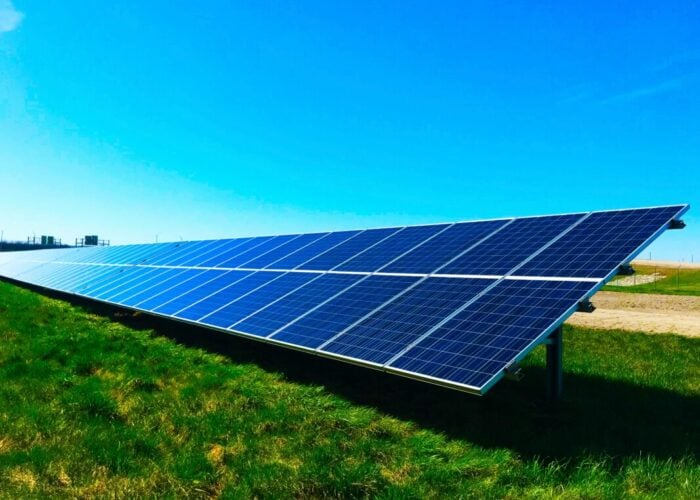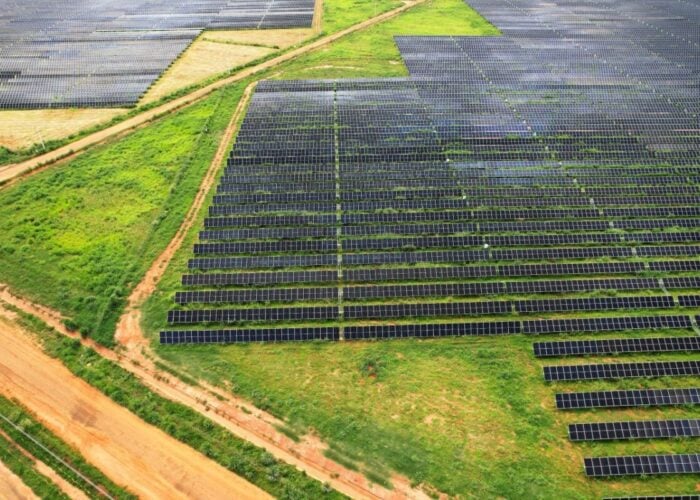Much has been made at this Solar Power International of the US solar industry being a bi-coastal industry where markets are concentrated in the western and eastern United States. That may well be, and may yet be for a while to come. But market potential for the “flyover” in Chicago, the biggest city in the Mid West, is really the final frontier for solar in the US.
California, Arizona, New Jersey, Massachusetts, North Carolina and Hawaii dominate the market and will continue to do so for some time to come. Of the 1.557GW of PV installed up to the first half of this year, 87% of demand has clustered around these states, according to GTM Research.
Try Premium for just $1
- Full premium access for the first month at only $1
- Converts to an annual rate after 30 days unless cancelled
- Cancel anytime during the trial period
Premium Benefits
- Expert industry analysis and interviews
- Digital access to PV Tech Power journal
- Exclusive event discounts
Or get the full Premium subscription right away
Or continue reading this article for free
Despite the Mid West's reputation as an enemy of renewables, there are pockets where there are friendly policies. In fact, of the five “hidden markets” in the US, Minnesota tops a list that includes DC, Virginia, Louisiana and Georgia.
Although Minnesota may be a surprise winner in that contest, it's the quality of the opportunity that matters rather than the size, Cory Honeyman, GTM Research analyst said today.
Minnesota's 1.5% solar carve out represents 450MW of demand, with 10% of that for small-scale distributed generation. The programme is also well funded through the utility Excel with a 2014-2018 budget of US$5 million a year.
“In terms of regulatory certainty, stability and quality of state incentives, Minnesota’s small-scale DG market really captures a lot of the traits that we're looking for in terms of entering new growth markets,” Honeyman said. “The demand is guaranteed over the next several years. Minnesota represents the highest quality opportunity for developing solar within that state.”
Even though all five of these states represent only 1GW of demand procured over the next 3.5 years, the investable opportunity is strong where there is a favourable regulatory landscape, net energy metering, a feed-in tariff, where it's just driven by utility procurement, solar renewable energy certificates (SRECs) or performance-based incentives.
“Currently [the hidden market] would account for less than 1% of market share, but in 2013 some disruptive market event has created an untapped total investable opportunity that could range between 50MW and over 700MW over the next three years or so.”
Georgia has the largest total investable opportunity because of its utility-scale procurement. The state's integrated resource plan will see demand for 525MW between 2015 and 2016. That's pretty large. But now for the quality bit: the feed-in tariff is set at $0.13/kWh for utility-side DG for the 20-year PPA term.
However, when it comes to incentives, the golden ticket goes to Washington DC, often cited in reports as an unofficial state.
Its SREC market is so undersupplied that prices have traded close to the ceiling at US$450-US$480/MWh. A fresh “hidden growth opportunity” has emerged this year with the Community Renewables Energy Act of 2013 in a metropolitan area where there's little space and 60% of customers can't install rooftop systems. New solar gardens up to 5MW will be able to keep their SREC so there will be plenty of incentive to reach the 200MW capacity in its carve out.
“DC represents one of the newly valuable hidden growth opportunities across the US,” said Honeyman. “A lot of that is driven by the fact that there is currently limited rooftop potential. NEM is relatively accessible up to 100kW at the full retail rate. But the big driving force for developing solar within that space is the undersupplied SREC market.”
In addition to the top three, an honourable mention should go to Dominion’s Pilot PPA programme in Virginia, which will see just 50MW, but that capacity is explicitly for the development of third party-owned systems. Rates will be decided in December.
“The fact that there is a known 50MW opportunity … to be procured between 2014 and 2015 represents a sizeable opportunity relative to what has been installed to date in that state,” he said.
Quiet dominance returned later with presentations from a Taiwanese companies on a trade mission. Dr Allen Wu from Motech, Taiwan's first cell maker and now one of the top 10 manufacturers of single and multi-crystalline silicon solar cells, unveiled its new monocrystalline cell. The Sirius cell will have an average efficiency of 20.2% and will be available in the first quarter of 2014, while Motech's Sirius cell 280W panel will be available in the third quarter of 2014.
Andy Shen at Neo Solar Power, Taiwan's largest cell manufacturer and the second largest in the world, said the company's Super 19 cell, with an average efficiency of 18.9%, would be available next month.
Such pragmatism and quiet confidence of a market well dominated clashed somewhat with the presentation from Lof Solar's coloured cells. I wasn't sold on ‘army green’ and ‘true steel’ to blend in or complement architecture and counteract the ‘moody blue’ of ordinary PV panels. But I'm no architect and Renzo Piano has used them extensively in recent buildings in Italy.
Elsewhere in the conference, energy storage themes continue to create a buzz – who will be first to that Holy Grail?
Ben Peters, director of solar policy and finance at REC Solar, had some interesting perspectives on how energy storage may boost the flagging commercial market, which has declined 11% year on year.
“Commercial solar is down,” he said. “There's a multitude of reasons why. The biggest challenge from a financing perspective is that the cost of solar has come down by more than half. When you go to a financier they have a US$50 million minimum fund portfolio, so if you want to finance an individual project you're lucky if you get someone to put forward US$1 million. Your 200-300kW systems, because the cost has come down, are more difficult to finance. That's why solar plus storage represents a major opportunity.
“Storage has a high upfront cost. Let's look at that as a benefit when talking about financing. Suddenly your 200kW system plus US$100,000-US$200,000 of batteries is a big enough dollar amount that your bank is going to want to take a look at it.”
This contradicts the notion that the dramatic decline in modules has made projects easier to finance. But there's some mileage in Peters' thinking, albeit limited, as he admits.
“The deployment for the commercial and industrial sector in energy storage is quite modest to say the least,” he said. “But over the next couple of years co-located solar plus storage projects behind the meter is going to be one of the largest growth sectors. That's not going to happen any time within the next six months, but that will be where the fastest growth it. That's not necessarily to say that it's where the highest volumes are but it's certainly where the most innovation is going to take place.”

